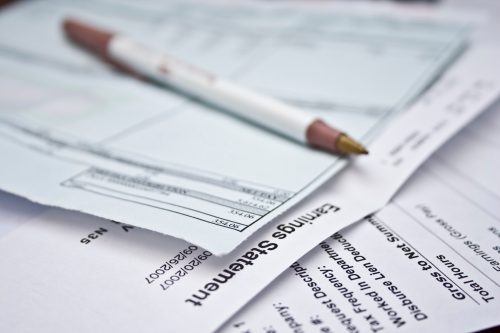This IRS Warns You to Do This Right After Filing Your Taxes
The agency has new guidance for taxpayers as tax season comes to a close.

As the 2022 tax season nears the imminent filing deadline, some taxpayers are scrambling to get their returns in at the last minute while others are sitting back and relaxing knowing they've already filed theirs. But even for the 91 million taxpayers who have already submitted their return to the Internal Revenue Service (IRS), the work might not actually be over. The tax agency just sent out a new warning, advising everyone to do one thing after filing. Read on find out what the IRS wants to make sure you get done.
RELATED: The IRS Just Gave This Urgent Last-Minute Warning to Taxpayers.
The IRS says you should check your tax withholding after you file your return.

The IRS posted a new warning for taxpayers on April 13, advising them to check their tax withholding once they're done with this year's tax return. According to the tax agency, doing this will allow you to make sure you're "having the right amount of tax taken out" of your pay in 2022.
"The IRS recommends checking withholding at least once a year. For anyone who has just finished filling out their 2021 return, now is a particularly good time to do it," the agency said. "It's also a good idea to use this tool right after a major life change, such as marriage, divorce, home purchase or the birth or adoption of a child."
The agency has an online tool you can use to figure this out.

You should use the online Tax Withholding Estimator to calculate the amount of federal income tax being taken out of your paycheck, according to the IRS. To use this tool, the agency recommends that you gather your most recent pay statement (and those for your spouse, too, if you're married), information for other sources of income, and your most recent income tax return.
Without this, your estimated amount might not come out correctly. "The Tax Withholding Estimator's results are only as accurate as the information entered," the IRS warned.
RELATED: For more financial advice delivered straight to your inbox, sign up for our daily newsletter.
You can change how much tax you're withholding from your paycheck.

If your 2021 refund was smaller or bigger than you expected, or you received a tax bill you weren't expecting this year, the IRS said that using the Tax Withholding Estimator can help "make sure it doesn't happen again" next tax season. The tool will estimate your federal income tax withholding and then show you how your refund, take-home pay, or owed taxes would be affected by your withholding amount.
If you want to change how much tax you're withholding from each paycheck after using the estimator, you can complete a new Form W-4 and submit it to your employer. "Checking withholding can ensure the right amount of tax is withheld and prevent an unexpected tax bill or penalty at tax time and determine whether to have less tax withheld up front, thereby boosting take-home pay and reducing any refund at tax time," the IRS explained.
But there are some people who should not use this tool.

While the Tax Withholding Estimator should work for most taxpayers, the IRS does advise some people not to use the tool. This includes taxpayers who have a pension but not a job and those who have nonresident alien status. Both of these groups should use other forms indicated on the agency's website.
And if your tax situation is "more complex" than the average person's, the agency said you should use the instructions in its Publication 505 instead to calculate your withholding amount. "This includes taxpayers who owe alternative minimum tax or certain other taxes, and people with long-term capital gains or qualified dividends," the IRS explained.
RELATED: The IRS Just Cautioned Taxpayers Against Doing This.





















